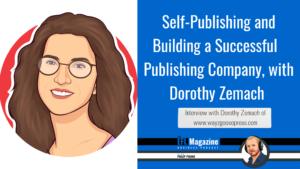by Patrice Palmer
New Ways in Teaching Speaking, Second Edition by TESOL Press was edited by Julie Vorholt, past Chair of the MWIS. This resource is a robust tome of more than 100 classroom-tested activities that have been provided by ESL/EFL teachers from around the world to develop learners’ speaking skills. There is definitely something for every proficiency level and age group in this resource. As a teacher with more than 23 years experience, I was familiar with most of the activities, however, no matter how many years we have been teaching, it is good to be reminded of a plethora of ideas that we can use with our students.
The book is very well-organized and divided into five categories:
- Developing Fluency;
- Developing Accuracy; Developing Pronunciation;
Speaking in Specific Contexts and Speaking and Technology. For further organization, each activity is organized into sub-sections and then arranged alphabetically. A good feature would have been to provide a system to easily find activities by proficiency level to save teachers time. For both the digital copy and print copy of the book, readers can find a website for all appendices. Activities with additional resources have an “R” icon which indicates that downloadable resources are available.
Each activity includes a mini lesson plan that is concise and easy to follow. I especially liked the references for each activity which gives teachers the opportunity to learn more or conduct further reading. I also found the Caveats and Options entries very useful because there are often challenges that teachers do not plan for which can make or break an activity. Since each activity in the book has been tested by the teacher who submitted it, teachers can hopefully anticipate or avoid any pitfalls. This information is definitely useful for new teachers.
In Part 1
Fluency, many of these activities could be used as ice-breakers or enders to energize your students at the end of the class (e.g. The Say 3 Challenge on p. 73 would be a great ender).
In Part 11
Accuracy, the Following Up activity (page 89) was one of my favourites in this section. I’m Proud to Be… (p. 100) is fresh and includes enough content for a complete lesson which is surely to be appreciated by busy teachers.
In Part 111
Pronunciation, I liked Favorite Things activity (p. 113) which includes audio/visual options to further aid students’ skill development. Some interesting game-based activities are found in this section as well.
In Part IV
Speaking in Specific Contexts, as a former college communications instructor, many of these activities were refreshing, creative and new to me. For The Job Interview activity (p. 151), I would suggest that cultural aspects be included so students understand the “whys” of interview questions. (One of my former students from China told me that job interviews do not start with small talk. He found this part of the job interview challenging so I allotted more time to discussing the cultural norms). Confronting Challenges (p. 167), Moving Beyond (p. 172), and Simulations (p. 180) are excellent activities for post-secondary students.
In Part V,
Speaking and Technology, activities provided use Flip grid and Speech Recognition software. For teachers unsure about using these forms of technology to help students develop their speaking skills, the clear step-by-step instructions are comforting.
Overall, this book is a must for teacher resource rooms. I also found some of the activities useful in my work as a trainer. The activities are timeless and there is certainly room for modification which means that activities can be used in a variety of ways. Given that planning lessons is time-consuming and labour-intensive, I would suggest finding ways to build on or exploit the speaking activities by adding a reading or writing component. The At End of the Rainbow activity (p. 5) includes a reading and video link – giving teachers most of the elements for a complete lesson.
As an experienced teacher, I would recommend that teachers take notes after using each activity. This will help in aiding one’s memory so that the activity can be modified if necessary for future lessons. Also, observe and document students’ engagement as well to determine whether the activity is a “keeper” but remember that even the most fun or interesting activity can quickly bore students if over-used. The challenge for many ESL/EFL teachers is to actually get those shy students to speak in class. Speed Debating, I Don’t Believe It and Favorite Things might be just what is needed to get students talking which really is the only way to improve speaking skills.




